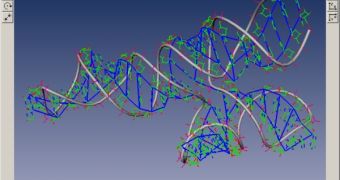What the new vaccine platform basically does is combine the cure for the disease it's meant to treat with small strands of "silencing" RNA, a type of nucleic acid that is used to eliminate the response some proteins give off when foreign bodies are inserted into the cells. This allows for a more precise and even distribution of the active substance throughout the affected cells, especially in the case of parasitic infections, when the cell can still be saved.
Besides cleaning the cells of infections, the new RNA transporter could also be used to destroy cells that were overwhelmed by viral infections. In such cases, the very DNA structure of the cell in question is compromised, so there is nothing left to save. Basically, the delivery system consists of a new type of polymer-based micro-particles that carry both the vaccine and the RNA strands. The scientists at the University of Austin, Texas, led by associate professor of biomedical engineering Krishnendu Roy, worked on this study for the better part of the last two years, performing tests on mice with a new Hepatitis B experimental cure.
The brilliant part in the discovery, say the researchers, is that RNA can suppress certain proteins inside the cell that usually process vaccines. If these proteins are compromised or infected, then the chances of the cure working, in any disease, are fairly slim. However, by eliminating them out of the equation, Roy's team was able to virtually "direct" the full force of the vaccine on just the affected parts of an infected cell. This opens up new paths for vaccine "tailoring," in other words adapting them for a particular individual's needs.
Graduate student Ankur Singh, who also worked on the project, says that the delivery system is still some years away from practical use. The team plans to keep studying the effects it has on lab mice for a couple of years, before finally moving to primate and human testing. Roy hopes to have a conclusive result in human trials in six to ten years from now. By that time, he hopes that the new invention will have already proven useful in fighting cancer and other mutating diseases.

 14 DAY TRIAL //
14 DAY TRIAL //